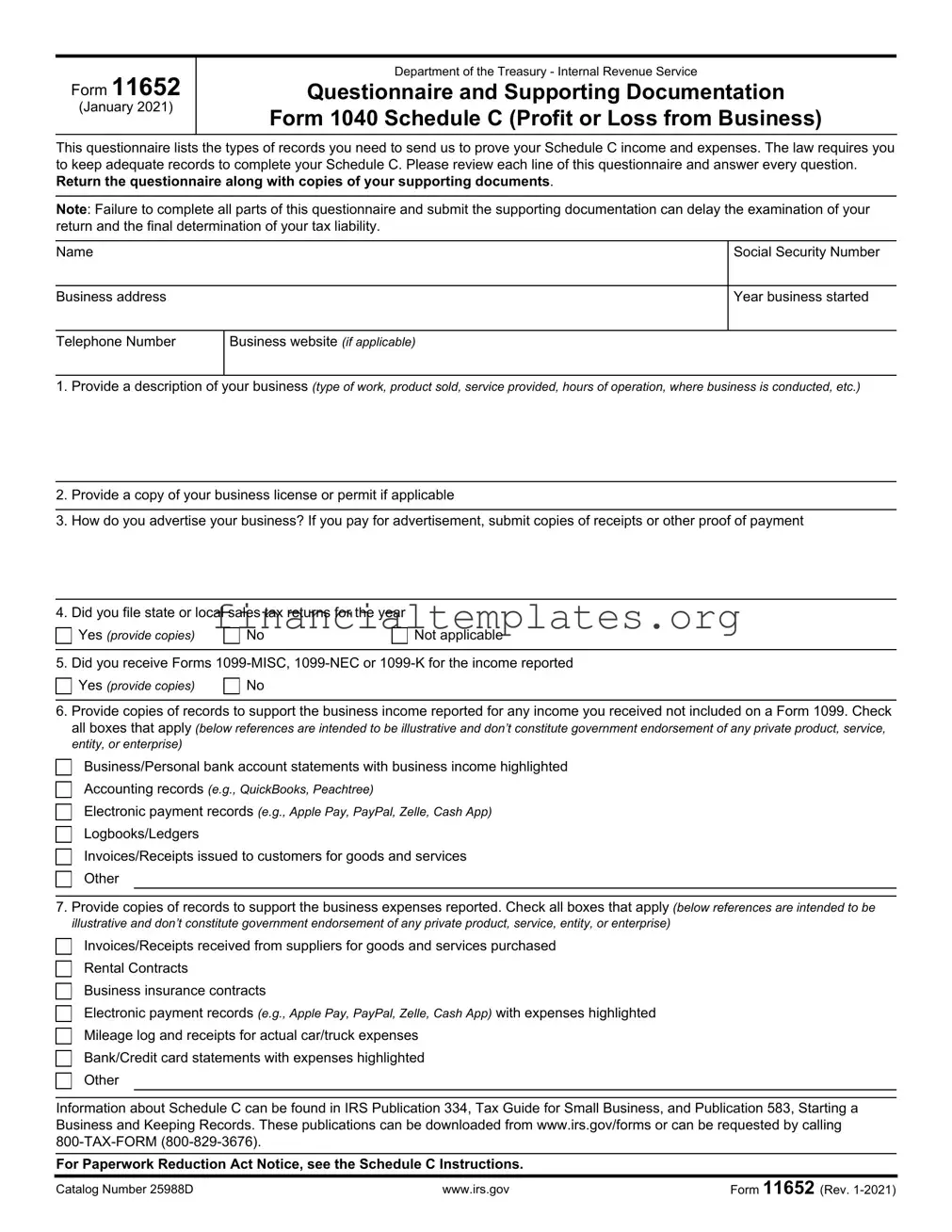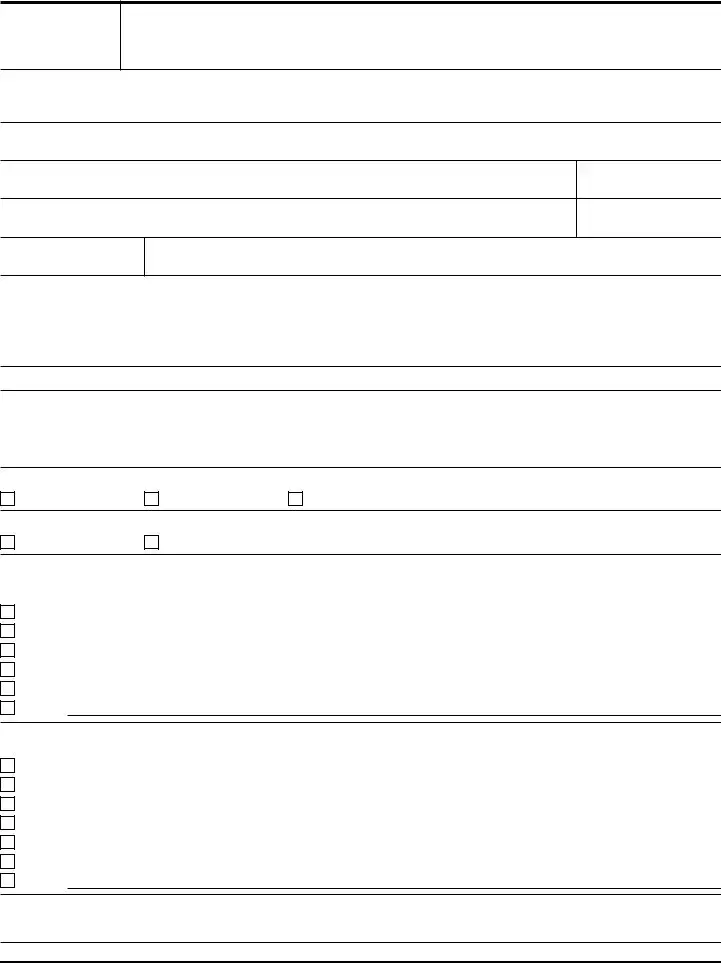The IRS Form 1040 Schedule C, which Form 11652 directly references, is a foundational document for small business owners and freelancers in the United States. It's used to report the income or loss from a business operated or a profession practiced as a sole proprietor. Similar to the IRS 11652, it requires detailed financial information about the business's operations, including income, expenses, and applicable deductions. Both forms are integral to accurately determining the tax obligations of individuals running their own businesses, with the key difference being that Form 11652 serves as a supplementary questionnaire to ensure the completeness and accuracy of the information reported on Schedule C.
The IRS Form 1099 Series, including Forms 1099-MISC, 1099-NEC, and 1099-K mentioned in the IRS 11652, are also related documents. These forms are used to report various types of income apart from wages, salaries, and tips. Specifically, they pertain to independent contractors, freelancers, and other non-employees to report payments for services performed. The IRS 11652 requests copies of these forms as part of its documentation requirement, demonstrating its role in substantiating the income declared on Schedule C with verifiable third-party reports.
IRS Publication 334, the Tax Guide for Small Business, is a comprehensive resource for individuals who operate as sole proprietors. It dovetails with the purpose of Form 11652 by offering detailed guidance on tax responsibilities, including how to document income and expenses accurately. This publication supports the questionnaire by providing the foundational knowledge required to understand why each piece of information or documentation is necessary, underlining the importance of thorough record-keeping as highlighted in Form 11652.
IRS Publication 583, Starting a Business and Keeping Records, is another document akin to Form 11652. It focuses on the initial stages of setting up a business and the crucial aspect of maintaining accurate records right from the start. The alignment with Form 11652 lies in its emphasis on record-keeping practices, which are necessary for fulfilling the documentation requirements listed in the questionnaire. Both documents serve to reinforce the IRS’s expectation that businesses will maintain complete and organized financial records.
The IRS Form 8829, Expenses for Business Use of Your Home, shares similarities with Form 11652 in that it too requires detailed information about the expenses associated with maintaining a business. While Form 8829 is specific to home office deductions, including calculations for depreciation and indirect expenses, it also necessitates thorough documentation and record-keeping, akin to the comprehensive approach demanded by Form 11652 for substantiating business expenses.
The IRS Form 4562, Depreciation and Amortization, is related to IRS 11652 through its focus on reporting the depreciation of property used in a business, another factor in determining the profit or loss from business operations reported on Schedule C. This form requires detailed records and calculations to substantiate depreciation claims, paralleling the meticulous documentation and support demanded by Form 11652 for various aspects of business operations.
Finally, the IRS Schedule SE (Form 1040), Self-Employment Tax, is indirectly connected to Form 11652 through its role in calculating the self-employment tax of individuals who report income on Schedule C. The income and loss figures established with the aid of Form 11652 directly influence the self-employment tax obligations determined by Schedule SE, underscoring the interconnectedness of these documents in the broader context of tax reporting and compliance for individuals running their own businesses.

